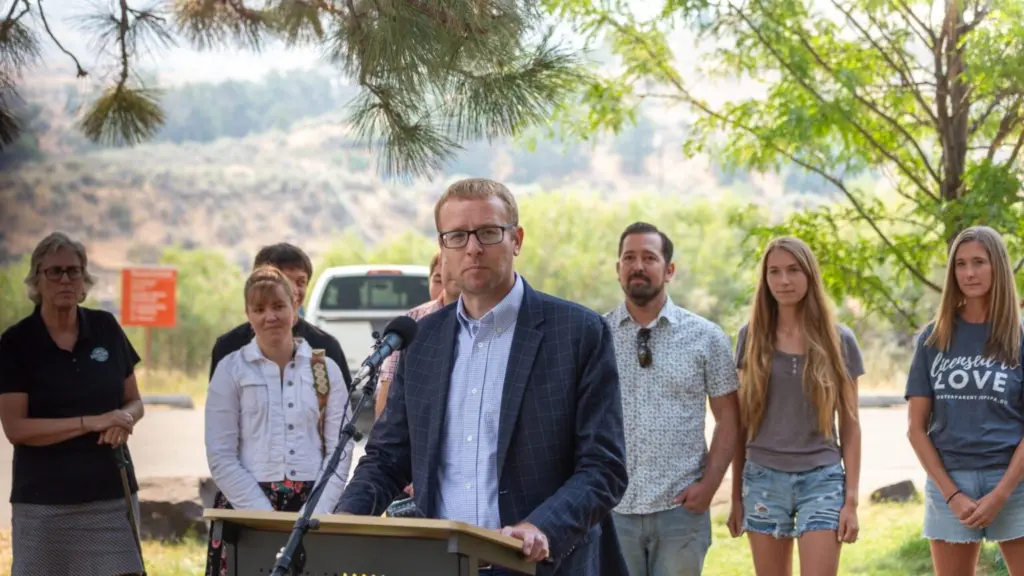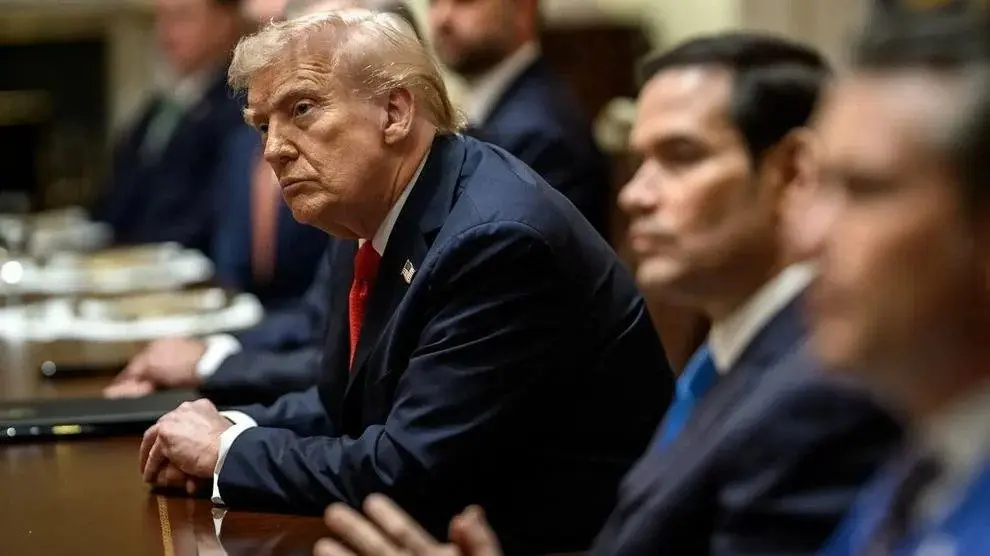WASHINGTON, D.C. – When Alex Adams stepped into his role leading the Idaho Department of Health and Welfare in June 2024, he immediately announced a laser focus on foster care.
Adams, nominated by President Donald Trump in March and last month confirmed by the U.S. Senate as Administration for Children and Families assistant secretary, is now taking a similar approach to his federal position.
On Monday, the federal administration announced the launch of “A Home for Every Child,” an initiative to bring up the ratio of foster children to foster homes to 1-to-1.
“Our Home for Every Child initiative nationally is really modeled off of what we did here in Idaho,” Adams said in an interview Wednesday in Boise.
As the state Health and Welfare director, Adams focused on policies to improve recruitment and retention of foster families as well as to prevent children from entering the system when possible, the Idaho Press reported. While his role now is more of an “overseer,” rather than provider of foster care services, he said he wants to focus on the same goals.
Many of his goals are outlined in a federal executive order signed Nov. 13 by Trump and First Lady Melania Trump.
Adams hopes to start by collecting the right data, doing away with the rest
Around two months into the new job, Adams said he’s hoping to start the new initiative by learning exactly how many foster homes there are nationwide.
“We don’t have good data on the number of homes nationally,” he said. “We require 200 data points from each state to be reported to us at the federal government, but homes is not one of them.”
Adams cited the nonprofit foster family counting project from the news outlet the Imprint, showing there are about 57 foster homes per 100 youth in the system nationwide. He’s working on ensuring states are counting how many available foster homes they have.
The administration is also in the process of evaluating how many of the required data points are necessary for states to continue to report.
“Accountability for federal taxpayer dollars is important, but right now we’re collecting too much from states that we don’t do anything with,” he said. “… I want to start clearing away that brush so that the front-end service providers can spend more of their time and energy on things that actually benefit children, as opposed to just box checking and hoop jumping.”
As part of the executive order, the federal agency was directed to identify and eliminate “unnecessary high-cost and low-value reporting requirements.” Adams said his agency has submitted ideas to reduce reporting requirements but couldn’t discuss them until they were approved.
GET THE MORNING HEADLINES.
It’s up to the states to determine how to improve foster home ratio
The administration provides between $11 billion and $12 billion to state child welfare systems. The federal administration can create financial incentives and provide guidance, technical assistance and best practices, but Adams expects states to create their own plans to achieve the goal.
His office is beginning to meet with state directors of health agencies or child welfare departments to start conversations around the goals and get their input before he launches specific directives.
He highlighted his work in Idaho, which included policies to make it easier to find and license family members, or kin, increased recruitment through faith-based organizations, and added resources and services for foster parents.
Idaho health official nominated to federal Health and Human Services role in Trump administration
He also focused heavily on prevention. During the 2025 legislative session, the child welfare budget included 36 new full-time employees for the prevention specialist team. Adams said at the time the majority of young people were entering the foster system because of mental health or substance abuse issues, and he wanted to focus on providing services to parents in the home to prevent their children’s removal.
There’s ‘right’ and ‘wrong ways’ to focus on prevention, Adams says
Adams highlighted Idaho’s work in prevention, but said there are “wrong ways” to do it.
In Idaho, prevention policies coincided with a court decision that limited law enforcement’s ability to remove children from homes; these factors, combined with the pandemic, led to a “perfect storm,” that seems to have resulted in increasingly severe abuse cases of children entering the foster system, foster child advocates previously told the Sun.
Adams said the administration is also working on about seven measures for states to implement alongside their policies to improve foster child-to-home ratios, to track indicators of child safety.
“I’ve been on the job for about six weeks at this point, but suffice it to say, child safety is our number one priority at (the Administration for Children and Families),” Adams said. “And as we lean into this and try to get a home for every child, making sure it’s done the right way, which is why it’s going to be really important the seven safety measures that we wrap around this.”
Idaho among first states to implement ‘predictive analytics’ in foster care
Next week, the federal administration will begin meetings about the use of predictive analytics in child welfare, Adams said.
The tool uses technology such as AI to help determine more quickly the best placement for a foster child, and move them more quickly toward permanency, either through adoption or reunification.
Idaho is one of the first states working to implement the tool, Adams said.
Idaho Department of Health and Welfare Division of Youth Safety and Permanency Administrator Jean Fisher told the Sun in October that the state agency was in the process of training in what are called “poor prognosis indicators.”
“They’re national indicators that would really be able to help our social workers critically think through cases where they, based on what those indicators are, might understand the case a little bit better from an earlier perspective that this case clearly has some reunification efforts that are very strong,” Fisher said.
Adams plans to address state foster systems’ use of children’s Social Security benefits
Adams is also gathering information about a nationwide practice of state welfare programs — including Idaho — collecting Social Security survivors’ and disability benefits entitled to foster children and using them to pay for their care.
Idaho foster youth didn’t receive Social Security money they’re entitled to. That will soon change.
Adams, as Idaho’s health director, issued a directive in May for the agency to halt the practice by July 1, 2026. He said Wednesday he’s now hoping to address it in his federal position.
“It’s very difficult to see any scenario in which you can morally justify, a child whose parents died, the parent having earned a Social Security survivor’s benefit, the child being entitled to that benefit, and then the state agency saying, ‘I’ll take that,’” Adams said.
The magnitude of the issue is hard to quantify, he said, because the money collected tends to get lumped with other federal benefits.
“The overall pie is estimated at about $160 million, but I have states that are telling me this might be 10% to 30% of the overall pie,” he said.
He’s begun by telling directors it’s happening, because he’s found some who were unaware. There’s not currently a specific plan to address it.
“I think the first thing I’m trying to do is get my arms around the magnitude of this,” he said, “because once you figure out the magnitude of it, then you can calibrate actions that are responsive to that.”
Thank you for reading this story!
Idaho Capital Sun is part of States Newsroom, a nonprofit news network supported by grants and a coalition of donors as a 501c(3) public charity. Idaho Capital Sun maintains editorial independence. Contact Editor Christina Lords for questions: info@idahocapitalsun.com.




